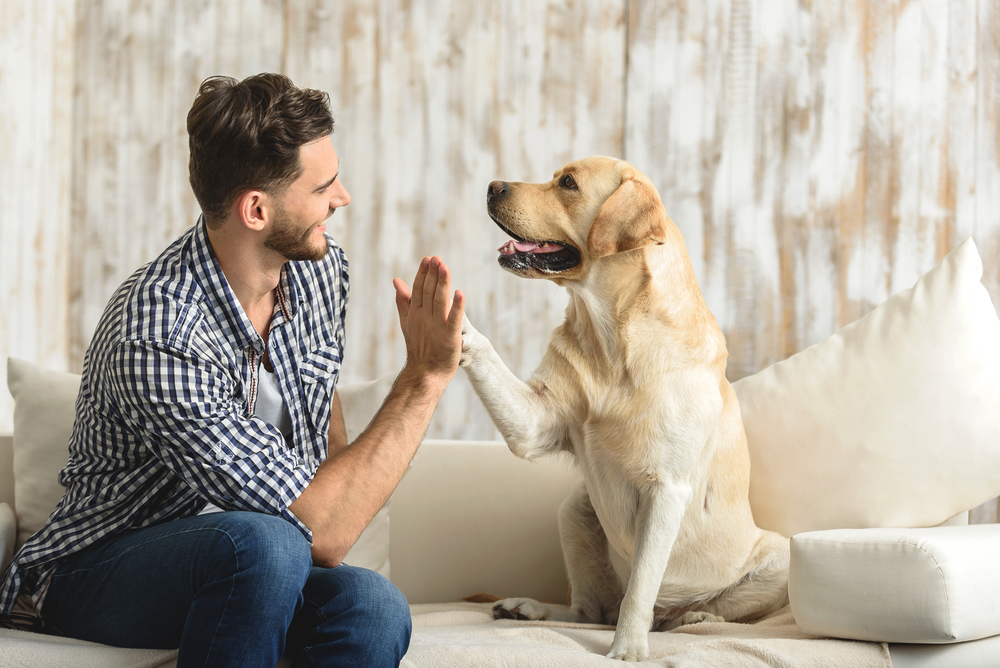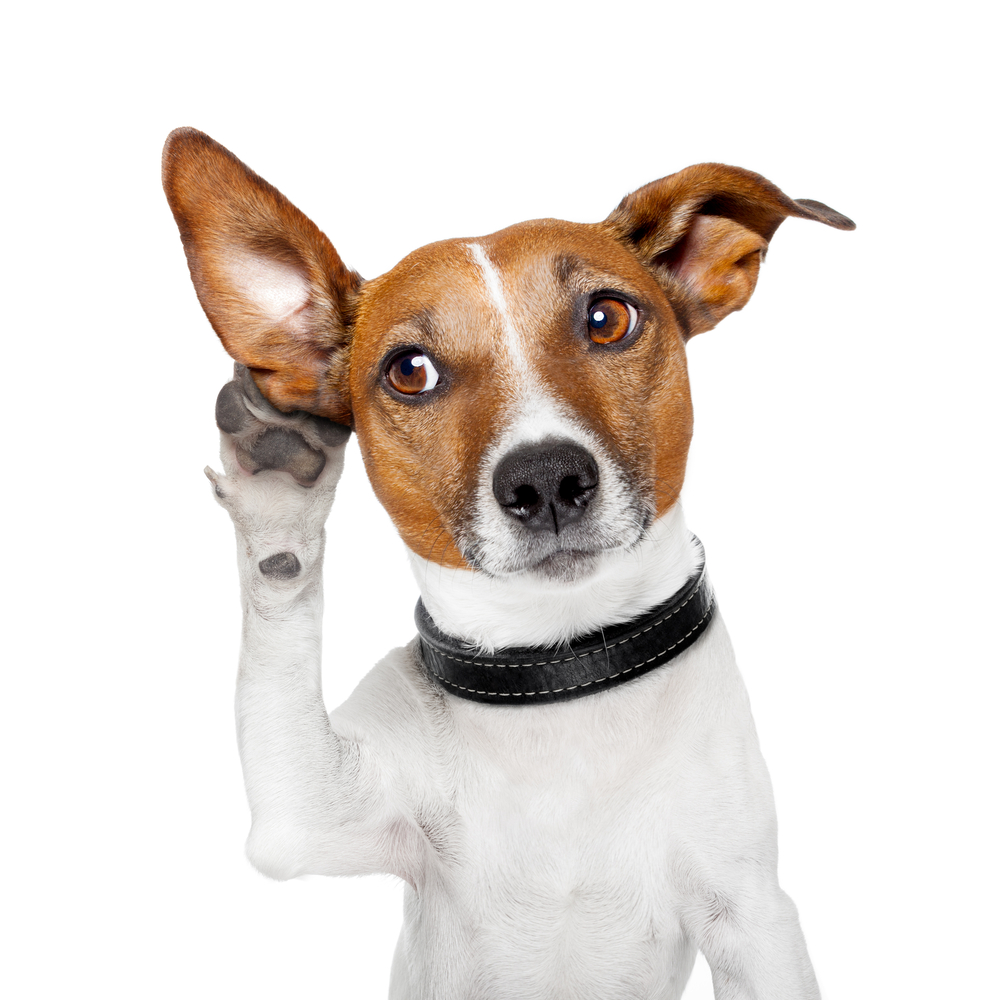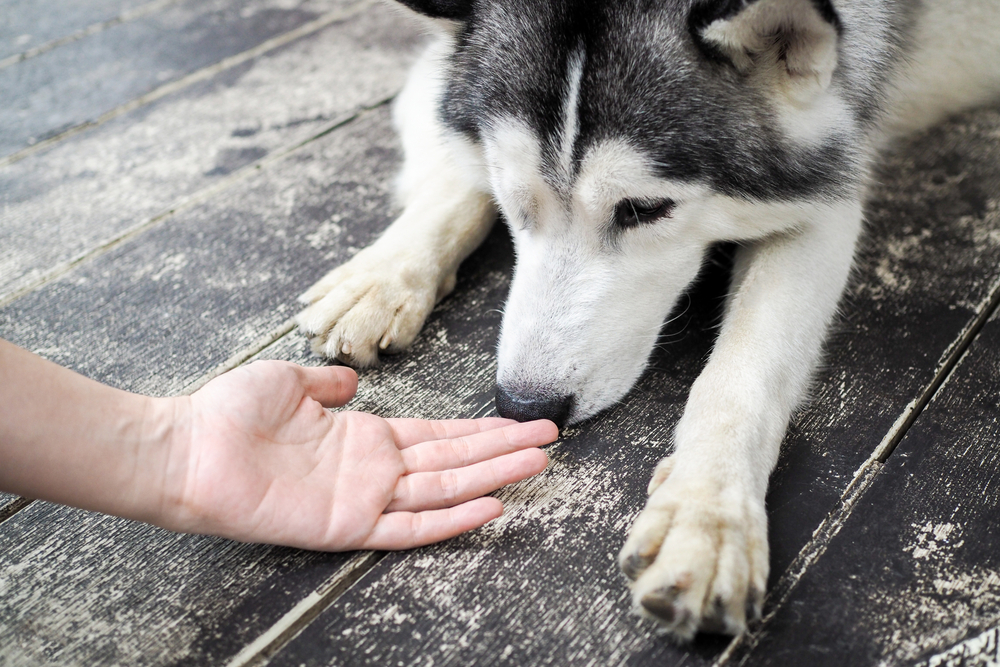Table of Contents (click to expand)
The bond between man and dog is so strong that both are able to pick up on each other’s emotions and feelings. Recently, researchers have concluded that dogs are able to do this in three key ways: through sight and vocalization, hearing, and smelling.
Humans share a very special bond with our canine companions, and this relationship is perhaps one of the most unique and cherished in the world. This is because our furry friends play an extremely important role in our lives. They cheer us up whenever we’re down, help us relax by lowering our blood pressure, protect us from threats and even guard our homes. In turn, humans provide dogs with shelter and food, but above all, companionship! It is therefore no surprise that dogs are commonly referred to as man’s best friend!

The bond between humans and dogs is one that has never stopped growing. Over the years, humans and their pet dogs have learned to better understand and communicate with each other. Many dog owners across the world believe that their pets can read their facial expressions, emotions and gestures, and can therefore judge if their human is happy, sad or angry. I’m sure you have realized at some point that your dog was able to detect when you were sad or angry, and then show you some extra love to cheer you up!
While it is largely well-known that humans can read and understand their dog’s emotions, there is still a great deal of debate on whether dogs are capable of the same. However, over the past decade, scientists have conducted numerous experiments to understand whether dogs are capable of recognizing human emotions.
Let’s take a look at a few studies that provide evidence on how dogs sense human emotions.
Through Facial Expressions And Vocalizations
Dogs are able to recognize emotions by combining vocalization with sight. This means that dogs are able to match, for example, happy or sad human facial expressions with their associated vocalizations.
Recently, a group of researchers observed how 17 pet dogs from England recognized human emotions. In this study, each dog was made to sit in front of two screens. On these screens, scientists displayed an image of a human or a dog that had either a happy face or an angry one. These images were later paired with different sounds ranging from happy to angry (human sounds) to aggressive dog-barking sounds. Researchers found that dogs stared at their screens longer when complimentary sounds and images (for example, a human with a happy expression and a cheerful voice) were shown. On the other hand, they showed disinterest (or a lack of emotion) when they heard a neutral sound.

Another study recorded the reactions of dogs when they were shown photographs of humans displaying one of the six basic human emotions (fear, happiness, anger, surprise, sadness, and disgust), along with neutral expressions. Researchers found that most dogs tilted towards their left when they observed angry, fearful and happy faces. Moreover, higher behavioral and cardiac activities were recorded among dogs when humans clearly expressed emotional cues.
Also Read: Do Our Dogs Really Know Us?
Through Hearing
We all know that dogs are very sharp listeners, especially when it comes to opening a fresh packet of dog treats! Science, however, suggests that dogs are also capable of relying on their hearing to read human emotions.
This finding was established by a group of researchers who, upon testing 30 dogs, discovered that they could understand human emotions by simply listening to them. In this study, each dog was given a bowl of food that was placed in the center of the room. On each side of the bowl, a speaker was placed, which was used to play non-verbal human sounds (for example, laughing as a happy sound or screaming as a sound of fear). Scientists wanted to see which side the dogs would turn their heads towards, even though both speakers played the same sound. These observations would later help them identify which part of the brain dogs relied upon to detect human emotions. Researchers found that dogs turned left when sad and fearful vocalizations were played (indicating that the right brain processed negative sounds) and turned right when happy sounds were played. This suggested that dogs were capable of recognizing and differentiating between a variety of human emotions.

Through Smell
We all know that dogs have an incredible ability to sniff out bombs and narcotics, but who would have ever thought they would be able to sniff out a person’s feelings and emotions too!
Recently, Italian researchers provided some interesting evidence on how dogs use their nose to sniff emotions. This study examined the tendencies of 31 dogs sniffing different objects using either their right or left nostril. This may seem a bit funny, but which nostril is used by a dog to sniff says a lot about how the dog emotionally reacts to different odors. Similarly, the use of only one side of the nose says a lot about which part of a dog’s brain is used to identify emotions.

Here, researchers tested a total of eight odors (four belonging to humans and the rest to dogs). Among the humans, sweat samples were collected from subjects who were stressed, fearful, happy, or in a neutral state. The dogs were then brought to a video camera with a Q-tip instrument saturated with the different odors. This helped capture the sniffing behavior of dogs. From this, researchers found that dogs used their left nostril to distinguish fearful and stressful situations among humans.
In short, yes, dogs are capable of recognizing human emotions and expressions—and they’re pretty good at it too. So, the next time you’re playing with your dog, try to see if your pup can pick up on your mood!
Also Read: Why Do Dogs Have Such A Great Sense Of Smell?
How well do you understand the article above!

References (click to expand)
- Albuquerque, N., Guo, K., Wilkinson, A., Savalli, C., Otta, E., & Mills, D. (2016, January). Dogs recognize dog and human emotions. Biology Letters. The Royal Society.
- Siniscalchi, M., d’Ingeo, S., & Quaranta, A. (2018, June 19). Orienting asymmetries and physiological reactivity in dogs’ response to human emotional faces. Learning & Behavior. Springer Science and Business Media LLC.
- Siniscalchi, M., d’Ingeo, S., Fornelli, S., & Quaranta, A. (2018, January 8). Lateralized behavior and cardiac activity of dogs in response to human emotional vocalizations. Scientific Reports. Springer Science and Business Media LLC.
- Siniscalchi, M., d’Ingeo, S., & Quaranta, A. (2016, May). The dog nose “KNOWS” fear: Asymmetric nostril use during sniffing at canine and human emotional stimuli. Behavioural Brain Research. Elsevier BV.
